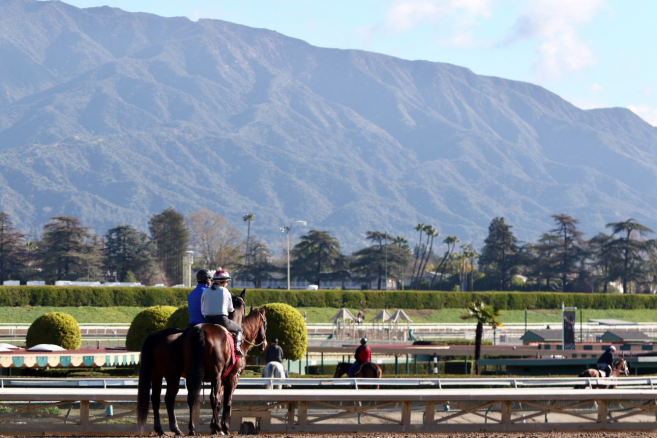Santa Anita Park reopened its track for limited training only Monday, March 11, 2019, according to CNN. The track released a statement that the 1-mile track will be limited to joggers and gallopers at certain time intervals to accommodate recent renovations.
The park closed Tuesday, March 5 after 21 horses died over a span of 10 weeks. Currently, the cause is unknown for the sudden rash of deaths, which has nearly doubled last year’s death rate of 10 in the same amount of time. One major suspicion comes from the track’s footing but no direct correlations have been made. External parties have been brought in to examine the soil.
“Over the past 4 days, we’ve been able to do a great deal in terms of amending the soil and inspecting it,” says Dennis Moore in the press release. The California-based trackman has been charged with leading the group of track maintenance personnel. The group includes third-party experts in investigating the main track as well as representatives of the California Horse Racing Board.
The 1-mile oval track has undergone numerous tests, including visual inspections and soil samples. Dr. Mick Peterson of the University of Kentucky’s Agricultural Equine Program has been called in to study the soil samples. Peterson is also professor of Biosystems and Agricultural Engineering.
In addition to testing the soil samples, Peterson has been testing the track itself with an Orono Biomechanical Surface Tester, a device that simulates the force and speed generated by the leading forelimb of a Thoroughbred running at full speed. The device tells Peterson about the track’s firmness, cushioning, grip and consistency at various locations throughout the track. Currently, the research obtained from the device indicates that the track cushioning is where it needs to be, according to Moore.
“I think the most important thing with this track right now is that we closely monitor compaction levels,” says Moore. “With all the rain, and this is the case in any wet weather, the ‘fines,’ silt and sand, can change very quickly and that affects the clays as well. Compaction, as well as dilution, of silt and sand, are all factors in the overall composition of the soil.”
In addition to taking track precautions, Santa Anita Park is also instituting new safety protocols in a recent press release. Trainers will now have to apply to work a horse on the track at least 24 hours prior. Within that window, veterinarians will be able to identify “at risk” horses through evaluation of past performances, workout data and physical examination.
In addition, the track aims to reduce traffic by changing the morning training schedule. An accredited veterinarian will be appointed to a newly created position, director of Equine Welfare. A new “House Rule” will also be implemented, stating that the veterinary records of any horse will follow that horse through any trainer or ownership change. This will hopefully provide greater transparency in veterinary records.
While the park has reopened for limited training, prominent races such as the Santa Anita Handicap for older horses and the San Felipe Handicap are on hold. The latter race is an important qualifying race for the Kentucky Derby in May.







